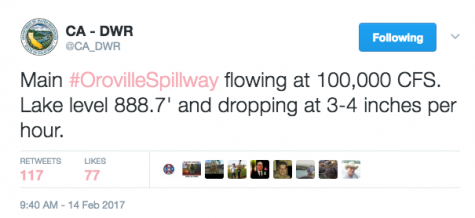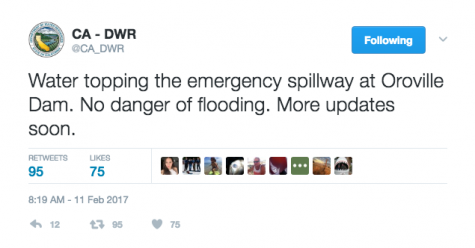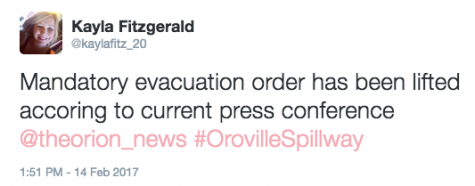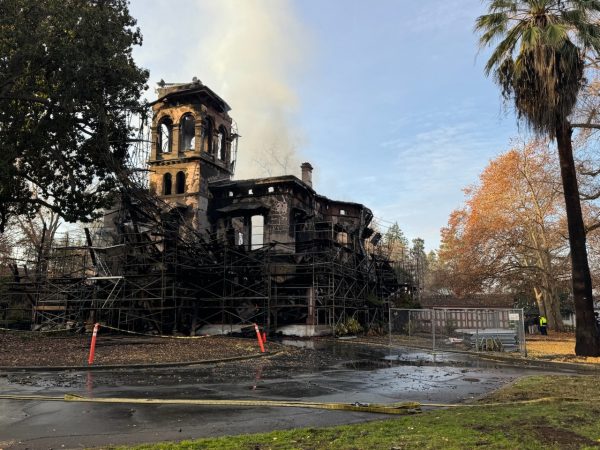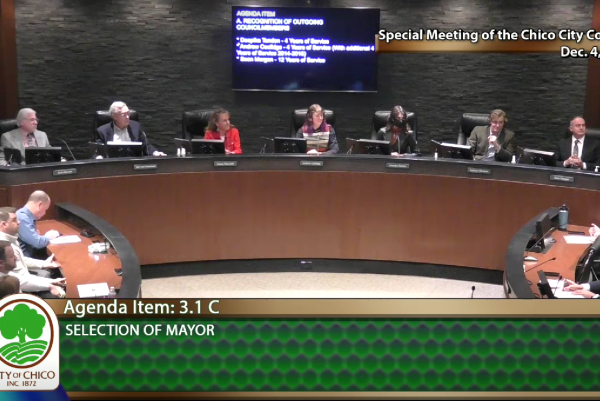Oroville Spillway crisis unfolds
Feb. 7: Oroville Dam officials discovered erosion damage to the bottom half of the spillway. According to the California Department of Water Resources, flow over the spillway was stopped to investigate the extent of the damage. In a press release, DWR officials said 20 percent of Lake Oroville remained empty and there was enough room in the lake to store expected flow from rain showers.
The lake level continued to rise.
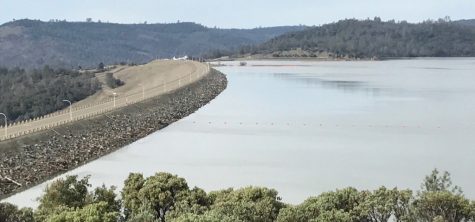
Feb. 8: DWR resumed the flow over the Spillway for two hours. The flow was reduced to from 55,000 cubic feet per second to 20,000 CFS as a test to see how much water the damaged spillway could handle.
To compensate for the decreased outflow from the spillway, officials increased flow through other outlets such as the Hyatt Power Plant, according to a Feb. 8 press release. DWR and Cal Fire crews also started removing trees and debris from the Emergency Spillway as a contingency.
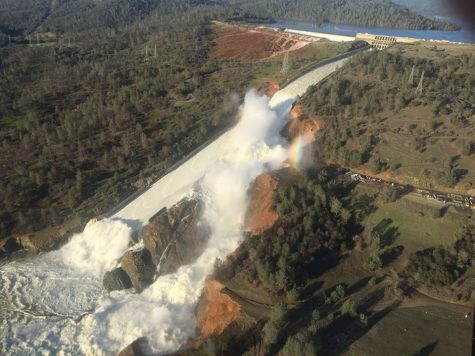
Feb. 9: Throughout the night, erosion damage to the spillway increased. Water flow was stopped again to investigate the “integrity of the structure,” a Feb. 9 DWR press release said. DWR prepared to use the Emergency Spillway as lake levels rise, saying it would not pose a flood threat downstream.
Feb. 10: Water flow down the Spillway was increased to` 55,000 cfs to reduce erosion damage and prevent the lake from overflowing as it inched closer to 901 feet. Erosion at the bottom of the Spillway began to threaten powerlines that carry power to the Hyatt Power Plant. “Without power lines to carry electricity into or away from the power plant and its outlets, the plant outlets would be unable to discharge at a capacity of 14,000 cfs,” a Feb. 10 press release from the DWR stated. Flows out of the power plant were later halted.
Feb. 11: At 6:45 a.m., DWR informed the public that the lake level was expected to exceed 901 feet and flow over the top of the Emergency Spillway. According to the press release, “DWR does not expect flows to exceed downstream channel carrying capacity, (but) the rate of flow into the ungated emergency spillway may change quickly.” At 8 a.m., water began an uncontrolled flow over the Emergency Spillway, washing debris into the Feather River.
“The flows we’re seeing are extremely low compared to the design of the structure,” said DWR Acting Director William Croyle. “Based on our current situation, there is no threat.”
Feb. 12: Erosion damage to the Emergency Spillway compromised the integrity of the structure, and posed a serious flooding threat. At 4:20 p.m., Butte County Sheriff issued a mandatory evacuation order to low levels of Oroville and parts of Yuba, Sutter and Butte counties. The evacuation order included more than 188,000 people. Evacuation centers were opened in Chico, Paradise and Glenn and Tehama counties to shelter evacuees.
Feb. 13: Throughout the day, helicopters and emergency crews began filling the hole with boulders. At a press conference, Butte County Sheriff Kory Honea said the mandatory evacuation remained in effect. Gov. Jerry Brown issued an emergency order to help response teams, and U.S. Representative Doug LaMalfa said he was communicating with the White House about the crisis.
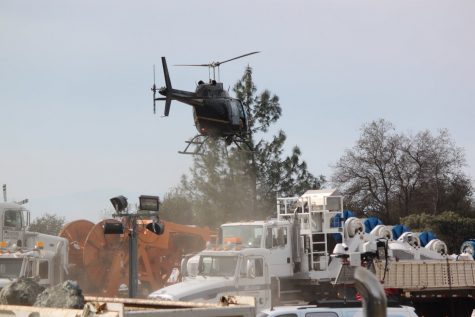
Feb. 14: Sheriff Honea reduced the immediate evacuation order to an evacuation warning at a press conference. The warning status was effective at 1 p.m.
Nearly 200,000 residents were displaced by the evacuation order. Residents who were displaced may now return home. According to Sherrif Honea, the immediate threat has ended but the potential for an emergency remains. Residents must be prepared for rapid changes and the possibility of another evacuation order, Honea said in a press release.
Molly Sullivan can be reached at [email protected] or @SullivanMollyM on Twitter.



